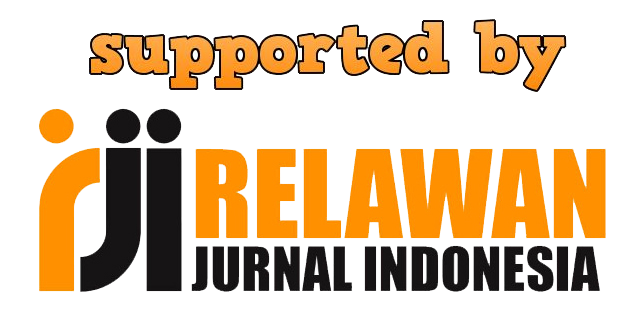Analysis of the Factors Affecting Poverty in Padasari Village
DOI:
https://doi.org/10.23887/jish.v12i1.58529Keywords:
Poverty, Natural Resources, Human Resources, InfrastructureAbstract
This study aims to determine the factors that cause poverty in Padasari Village, Cimalaka District, and Sumedang Regency, separately or simultaneously. This research uses quantitative methods with multiple descriptive and linear approaches. Determination of the sample in this study using the Slovin model. Data processing techniques are carried out through validity and reliability tests. Data were analyzed using the SPSS application. The results of the study show that if not adequately managed, natural resources can have a negative impact on poverty levels, human resources involve the quality and quantity of a region's workforce, and human resources who do not have access to education, skills, and training will be difficult for them to obtain welfare.
References
Achmad, W. (2022a). Dimensi sosial dalam pengembangan masyarakat di wilayah pesisir. Jurnal Kewarganegaraan, 6(2), 4985-4994.
Achmad, W. (2022b). Social action and social solidarity: Community empowerment in the digital age. Neo Journal of Economy and Social Humanities, 1(3), 30–35.
Achmad, W., Nurwati, N., Fedryansyah, M., & Sumadinata, R. W. S. (2022). Women’s Social Capital for Empowering Poor Households. International Journal of Artificial Intelligence Research, 6(1).
Aziz, G. A., Rochaida, E., & Warsilan, W. (2016). Faktor faktor yang mempengaruhi kemiskinan di Kabupaten Kutai Kartanegara. INOVASI, 12(1), 29–48.
Fretes, P. N. D. (2017). Pengaruh dana perimbangan, pendapatan asli daerah, dan pertumbuhan ekonomi terhadap indeks pembangunan manusia di Kabupaten Kepulauan Yapen. Jurnal Akuntansi & Ekonomi FE. UN PGRI Kediri, 2(2), 1–33.
Ghozali, I. (2013). Aplikasi Analisis Multivariate dengan Program IBM SPSS 21 Update PLS Regresi. Semarang: Badan Penerbit Universitas Diponegoro.
Hadi, R., Wahyudin, U., Ardiwinata, J. S., & Abdu, W. J. (2015). Education and microfinance: an alternative approach to the empowerment of the poor people in Indonesia. SpringerPlus, 4(1), 1–9.
Hanandita, W., & Tampubolon, G. (2016). Multidimensional poverty in Indonesia: Trend over the last decade (2003–2013). Social Indicators Research, 128(2), 559–587.
Ilyasa, F., Zid, M., & Miarsyah, M. (2020). Pengaruh eksploitasi sumber daya alam perairan terhadap kemiskinan pada masyarakat nelayan. Jurnal Ilmiah Pendidikan Lingkungan Dan Pembangunan, 21(1), 43–58.
Indra, P. (2001). An Analysis Towards Urban Poverty Alleviation Program in Indonesia. University of Southern California.
Ishatono, I., & Raharjo, S. T. (2016). Sustainable development goals (SDGs) dan pengentasan kemiskinan. Share: Social Work Journal, 6(2), 159.
Kurniawan, R., & Managi, S. (2018). Economic growth and sustainable development in Indonesia: an assessment. Bulletin of Indonesian Economic Studies, 54(3), 339–361.
Mahendra, A. (2017). Analisis pengaruh pertumbuhan ekonomi, pendapatan perkapita, inflasi dan pengangguran terhadap jumlah penduduk miskin. Jurnal Riset Akuntansi & Keuangan, 113–138.
Majid, M. S. A. M., Dewi, S., & Kassim, S. H. (2019). Does financial development reduce poverty? Empirical evidence from Indonesia. Journal of the Knowledge Economy, 10(3), 1019–1036.
Mardiana, M., Militina, T., & Utary, A. R. (2018). Analisis pengaruh pengeluaran pemerintah daerah sektor pendidikan dan kesehatan serta infrastruktur terhadap tingkat pengangguran serta tingkat kemiskinan. Inovasi, 13(1), 50–60.
Nasution, Z. (2014). Pertumbuhan ekonomi dan kemiskinan. ECOBISMA (Jurnal Ekonomi, Bisnis Dan Manajemen), 1(2), 1–10.
Prasetyo, P. E. (2008). The quality of growth: Peran teknologi dan investasi human capital sebagai pemacu pertumbuhan ekonomi berkualitas. JEJAK: Jurnal Ekonomi Dan Kebijakan, 1(1).
Prianto, A. (2020). Menakar kualitas pertumbuhan ekonomi Indonesia. Jurnal Manajemen Dan Usahawan Indonesia, 42(1), 23.
Purnomo, S. D., Wijaya, M., & Setiawan, H. (2021). Infrastruktur dan kemiskinan di Provinsi Daerah Istimewa Yogyakarta. Majalah Imiah Manajemen Dan Bisnis, 18(1), 10–19.
Saputra, R. (2017). Knowledge spillover terhadap pertumbuhan ekonomi di Aceh. Jurnal Ilmiah Mahasiswa Ekonomi Pembangunan, 2(2), 276–284.
Soesilo, Y. H., Suman, A., & Kaluge, D. (2008). Penyebab kemiskinan masyarakat tani (studi di Dusun Ngebrong, desa Tawangsari, Kecamatan Pujon, Kabupaten Malang). Journal of Indonesian Applied Economics, 2(1).
Sumarsono, S. (2009). Teori dan kebijakan publik ekonomi sumber daya manusia. Yogyakarta: Graha Ilmu.
Sumodiningrat, G. (1999). Kemiskinan: teori, fakta, dan kebijakan. Impa.
Suparlan, P. (2000). Kemiskinan perkotaan dan alternatif penanganannya. Seminar Forum Perkotaan: Departemen Permukiman Dan Prasarana Wilayah.
Todaro, M. P. (2000). Pembangunan ekonomi di dunia ketiga edisi ketujuh. Jakarta: erlangga.
Wijaya, D. R., Paramita, N. L. P. S. P., Uluwiyah, A., Rheza, M., Zahara, A., & Puspita, D. R. (2020). Estimating city-level poverty rate based on e-commerce data with machine learning. Electronic Commerce Research, 1–27.
Yudhistira, M. H., & Sofiyandi, Y. (2018). Seaport status, port access, and regional economic development in Indonesia. Maritime Economics & Logistics, 20(4), 549–568.
Downloads
Published
Issue
Section
License
Copyright (c) 2023 Willya Achmad, Siti Sofro Sidiq, R. Yogie Prawira

This work is licensed under a Creative Commons Attribution-ShareAlike 4.0 International License.
Authors who publish with the Jurnal Ilmu Sosial dan Humaniora agree to the following terms:
- Authors retain copyright and grant the journal the right of first publication with the work simultaneously licensed under a Creative Commons Attribution License (CC BY-SA 4.0) that allows others to share the work with an acknowledgment of the work's authorship and initial publication in this journal.
- Authors are able to enter into separate, additional contractual arrangements for the non-exclusive distribution of the journal's published version of the work (e.g., post it to an institutional repository or publish it in a book), with an acknowledgment of its initial publication in this journal.
- Authors are permitted and encouraged to post their work online (e.g., in institutional repositories or on their website) prior to and during the submission process, as it can lead to productive exchanges, as well as earlier and greater citation of published work. (See The Effect of Open Access)


.png)
.png)













